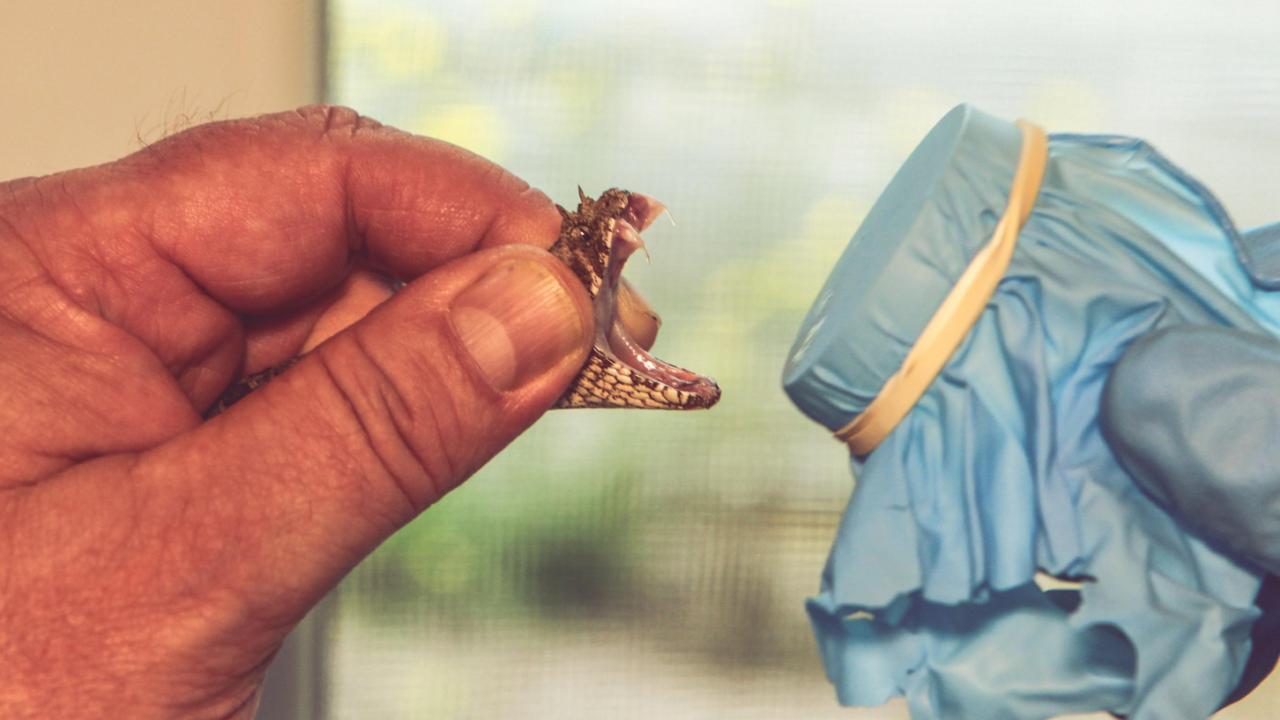As a biologist and toxicologist affiliated with Naturalis and the VU Amsterdam, I study the way in which snake venom affects the human body. Snakebites cause a major health problem on a global scale, claiming more than 100,000 deaths each year. With this research I am part of an international group of scientists that is trying to find a way to reduce the number of deaths from snakebites.
Keywords
Snake venom, snakebite, (venom) evolution, antivenom, neglected tropical disease, toxicology, proteomics, biodiversity, science communication
In themedia
For me, storytelling is one of the most enjoyable and most important tasks for me as a scientist. Fortunately, I regularly get the chance to do this. As a biologist, I was asked to explain why eagles have amazing vision, to tell about the genome of the Australian platypus and the venom of the king cobra and to elaborate on a newly discovered chocolate-colored frog.
A selection of last year's media appearances:
- An article on the back page of NRC (Dutch newspaper) in which a journalist and I dealt with an old bit of reptilian folklore that holds that your pet snake would 'measure' its owner before eating it. The article can be read here (in Dutch).
- Snakebite Awareness Day, Freek Vonk and I were invited by Op1 (Dutch talkshow) to talk about the problem of snakebites and our research into snake venom.
- Earlier this year EW Magazine came out with the '30-under-30' list. According to this magazine, the thirty millennials on the list are all stars in their fields: from sports to politics, to the business community and science.
Researchinterest
"I must have been 7 years old when I first found a snake in the wild. I didn't believe my eyes and was ecstatic."
During my PhD I will be mainly looking at the problem of snakebite envenoming. With this, I will be part of an international group of scientists that have the aim of better understanding snake venom.
My research is motivated by a fundamental interest in venomous animals. The predator-prey arms race that has been going on for millions of years has resulted in the fact that venom has emerged independently more than 30 times within the animal kingdom. Venom is a refined cocktail of dozens of toxins that can cause paralysis, mimic blood clotting factors and affect internal organs.

Scientificpublications
- Bittenbinder, M.A.*, Vonk, F.J.* et al. (2021). A non-lethal method for studying scorpion venom gland transcriptomes, with a review of potentially suitable taxa to which it can be applied. PLOS ONE. doi.org/10.1371/journal.pone.0258712
- Jenkins T.P., Bittenbinder, M.A. et al. (2021). Venomous animals and the envenomings they cause in the Middle East and North Africa. PLOS Neglected Tropical Disease (accepted).
- Xie, C. Bittenbinder M.A. et al. (2021). Erythrocyte haemotoxicity profiling of snake venom toxins after nanofractionation. doi.org/10.1016/j.jchromb.2021.122586
- Puschhof, J., Post, Y., Beumer, J., Kerkkamp, H.M., Bittenbinder, M.A., et al. (2021). Derivation of snake venom gland organoids for in vitro venom production. Nature Protocols. doi.org/10.1038/s41596-020-00463-
- Chunfang X., Albulescu, L. Bittenbinder, M.A. et al. (2020). Neutralizing effects of small molecule inhibitors and metal chelators on coagulopathic Viperinae snake venom toxins. doi.org/10.1101/2020.06.02.129643
- Youngman, N.J., Zdenek, C.N., Dobson, J.S., Bittenbinder, M.A. et al. (2018). Mud in the blood: Documentation of novel potent anticoagulant coagulotoxicity in the venoms of the Australian elapid snake genus Denisonia (mud adders) and relative antivenom efficacy. Toxicology Letters. doi.org/10.1016/j.toxlet.2018.11.015
- Bittenbinder, M.A., et al. (2019). Differential destructive (non-clotting) fibrinogenolytic activity in Afro-Asian elapid snake venoms and the links to defensive hooding behavior. Toxicology in Vitro, 60. doi.org/ 10.1016/j.tiv.2019.05.026
- Bittenbinder, M.A. et al. (2018). Coagulotoxic cobras: Clinical implications of strong anticoagulant actions of African spitting Naja venoms not neutralized by antivenom but are by LY315920 (varespladib). Toxins, 10 (516). doi.org/10.3390/toxins10120516
- Kok P.J.R., Bittenbinder M. A. et al. (2018). Integrative taxonomy of the gymnophthalmid lizard Neusticurus rudis Boulenger, 1900 identifies a new species in the eastern Pantepui region, north-eastern South America, Journal of Natural History 52: 1029-1066. doi.org/10.1080/00222933.2018.1439541
Presenting
Whether it's a group of scientists you're talking to, or a group primary school kis, nature fascinates everyone from young to old.
Surprising and captivating people with a story about nature is my greatest passion. Luckily I regularly get the chance to talk about my research, the problem of snakebites and many other nature-related topics. This I do on radio, TV and in newspapers and magazines, but also in front of large audiences.